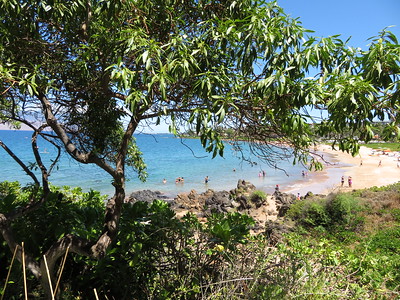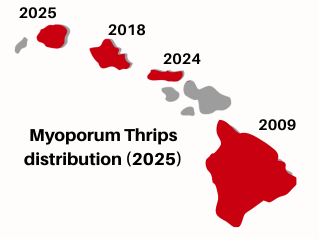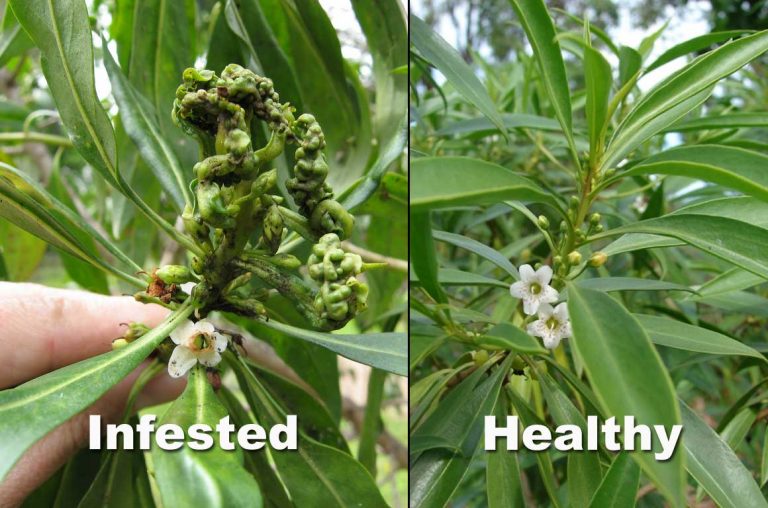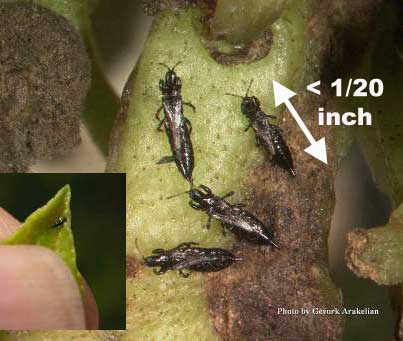Myoporum thrips confirmed on Kauaʻi- Mahalo to our community!
Myoporum thrips (Klambothrips myopori) have been confirmed on Kauaʻi for the 1st time, thanks to a public report to 643pest.org . Community kilo (careful observation) and reporting is critical to protecting our native naio (Myoporum spp.)

Naio growing at the Wailea Point Coastal Walk, Maui, Hawaii. Kim & Forest Starr.
Naio is an important backbone of Hawaiʻi’s dry and lowland forest ecosystems and supports native insects and pollinators. It also carries cultural significance and is a valued wood, called ‘a‘aka, that is hard and fragrant. Naio has historically been used for hale (house) posts, net gauges, and long-burning torches.
Kauaʻi Detection of Myoporum Thrips Pest

A public report to 643pest.org in early August triggered a rapid, multi-agency response (DOFAW and KISC, with support from HDOA Biosecurity). Partners launched island-wide surveys. Two additional infestations on cultivated plants were found, as well as infested plants in multiple wildland areas. An 2013 multi-agency early-detection plan- Early Detection and Rapid Response Plan for Myoporum Thrips (Klambothrips myopori) on Kauai– helped accelerate partner action after the detection.
Current Known Distribution of Myoporum Thrips in Hawaiʻi
As of September 2025, naio thrips are confirmed on Hawaiʻi Island (since 2009), Oʻahu (2018), Molokaʻi (2024) and now, Kauaʻi (2025). There are no confirmed detections to date on Maui, Lānaʻi, or Kahoʻolawe, so heightened vigilance to protect these islands is essential. Because thrips can hitchhike on shipped plants, equipment, plant parts, and people, residents are urged to watch for curled or deformed new naio growth and report immediately at our state pest reporting hotline 643pest.org.


What you can do:
- Report it: Suspect naio damage? 643pest.org (Make sure to take clear photos of the damage and get a precise location.)
- Avoid spread: Don’t move naio plants or green waste between sites/islands; bag and bin infested trimmings.
- Inspect nursery stock: Check new growth for tight leaf curling/galled tips; gently unfold a few; do a quick tap test over white paper. Ask your nursery where naio/Myoporum stock came from and if plants were inspected/isolated on arrival.
- Quarantine & sanitize: Isolate new plants 2–4 weeks; re-check weekly; sanitize tools between plants.
- Learn & share: HISC Myoporum Thrips profile (symptoms, photos, and island contacts)
Mahalo to the community members who shared the first Kauaʻi reports via 643pest.org and to our partners for the rapid response. Your reports make a real difference.
More pictures of what infested naio looks like and information about myoporum thrips at our HISC Myoporum Thrips page.
Learn more about the importance of naio, where to see naio, and how to cultivate naio :
Maui Nui Botanical Garden Naio Page
DOFAW Naio Page
Native Hawaiian Garden Naio Page